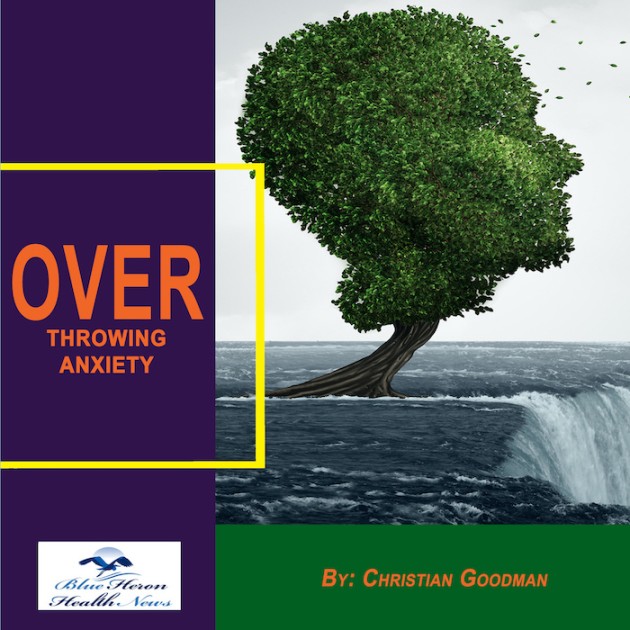
Overthrowing Anxiety™ This eBook includes a complete program to treat anxiety effectively. It guides you to learn the ways to find, understand, and accept the main cause of your anxiety and start using the techniques provided in it to treat the problem.
How can one cope with the emotional impact of chronic migraines?
Dealing with the emotional toll of chronic migraines is a mix of practical measures, emotional support, and professional intervention. Chronic migraines can significantly influence the quality of life, making one feel frustrated, isolated, anxious, and even depressed. The following are evidence-backed methods to deal with the emotional burden:
???? 1. Recognize the Emotional Burden
Accept that it’s okay to feel angry, sad, guilty, or helpless while dealing with a chronic illness.
Naming and legitimizing your emotions can be the first step to emotional relief.
???? 2. Build a Support Network
Talk to friends, family members, or join migraine support groups—in person or online.
Sharing experiences can reduce feelings of isolation and offer practical advice.
???? 3. Work with a Mental Health Professional
Cognitive Behavioral Therapy (CBT) has been shown to help people restructure negative thought patterns, manage stress, and reduce the emotional burden of chronic pain.
A therapist who is familiar with chronic illness can also help with coping skills and acceptance.
???? 4. Use Stress-Reduction Strategies
Stress is a common migraine trigger and emotional amplifier. Methods include:
Mindfulness meditation
Progressive muscle relaxation
Deep breathing exercises
Gentle yoga or tai chi
???? 5. Track Triggers and Patterns
Maintain a migraine diary to identify triggers (e.g., sleep habits, foods, stress levels).
Knowing what triggers attacks can give a feeling of control and reduce worry about unpredictability.
???? 6. Develop a Regular Routine
Regular sleep, meals, fluids, and exercise can stabilize both migraines and mood.
Consistency in daily routines reduces emotional and physiological tension.
???? 7. Engage in Meaningful Activities
Continue to do things that give you enjoyment—within your limits. This affirms identity and counters feelings of despair or worthlessness.
Creative pursuits, volunteering, or low-impact exercise can be a mood enhancer.
???? 8. Open Communication
Be honest with family and friends, as well as with coworkers, about your condition and how it impacts you.
Assert your needs calmly—whether that means quiet time, help with chores, or workplace accommodation.
???? 9. Medication for Emotional Well-being
If depression or anxiety is severe or persistent, antidepressants or anti-anxiety medications (some of which also prevent migraines) can help.
Discuss possibilities with your doctor or neurologist.
???? 10. Be Kind to Yourself
Don’t fault yourself for developing migraines or for a lack of productivity on tough days.
Be as kind and compassionate with yourself as you would be with a friend in the same position.
Would you like a sample daily self-care plan or journal template that’s specifically designed for chronic migraine management?
Vestibular migraines are a type of migraine that primarily affects the vestibular system, which is responsible for balance and spatial orientation. Unlike typical migraines with predominant head pain, vestibular migraines more often lead to vertigo, dizziness, and balance problems, with or without headache.
Primary Symptoms of Vestibular Migraines
Vertigo: A sensation that the room is spinning or that you’re moving when you’re not
Dizziness or lightheadedness
Balance problems or unsteadiness
Motion sensitivity: increasing with movement of your head or being in visually busy environments
Nausea or vomiting
Headache (not always present)
Sensitivity to light, sound, or smell
Visual aura (flashing lights or blind spots)
Attacks can last from minutes to hours, and sometimes even days.
Diagnosis
There is no test for vestibular migraines. Diagnosis is based on:
Clinical history of migraine
Recurrent vestibular symptoms
Exclusion of other disorders (such as Ménière’s disease or inner ear disorders)
Meeting International Headache Society criteria
Treatment Options
1. Lifestyle Changes
Avoid triggers: foods (e.g., chocolate, wine, aged cheese), stress, dehydration, sleep deprivation, and hormonal changes
Sleep hygiene: regular sleep pattern reduces migraine frequency
Dietary changes: migraine elimination diet can be used to identify food triggers
Stress management: through yoga, meditation, or cognitive behavior therapy
2. Acute Management (During an Attack)
Triptans (e.g., sumatriptan): if headache is present
Antiemetics: such as promethazine or ondansetron for nausea and vomiting
Vestibular suppressants: such as meclizine, diazepam, or dimenhydrinate to manage vertigo
NSAIDs: for pain if applicable
3. Preventive Treatment
Used if episodes are frequent, disabling, or severe.
Medications:
Beta-blockers (such as propranolol)
Antidepressants (such as amitriptyline or venlafaxine)
Anticonvulsants (such as topiramate or valproate)
Calcium channel blockers (such as verapamil)
Vestibular Rehabilitation Therapy (VRT):
A type of physical therapy used to improve balance and reduce dizziness with the use of special exercises
Prognosis
Vestibular migraines can be well managed with proper diagnosis, lifestyle modification, and treatment. However, they can fluctuate in severity and frequency over time.
Would you like to have a comparison between vestibular migraine and Ménière’s disease since they are confusing?
Overthrowing Anxiety™ This eBook includes a complete program to treat anxiety effectively. It guides you to learn the ways to find, understand, and accept the main cause of your anxiety and start using the techniques provided in it to treat the problem.
